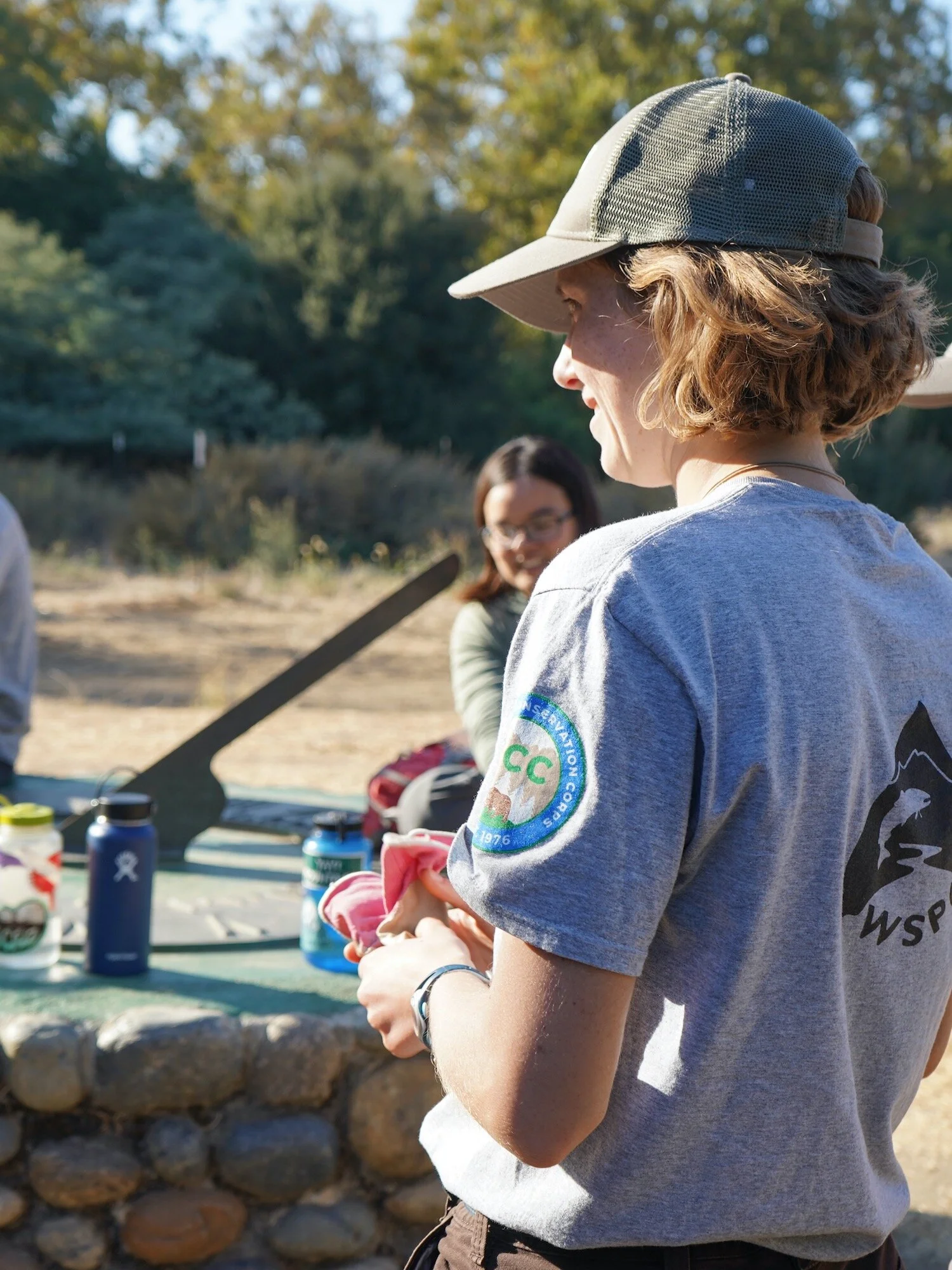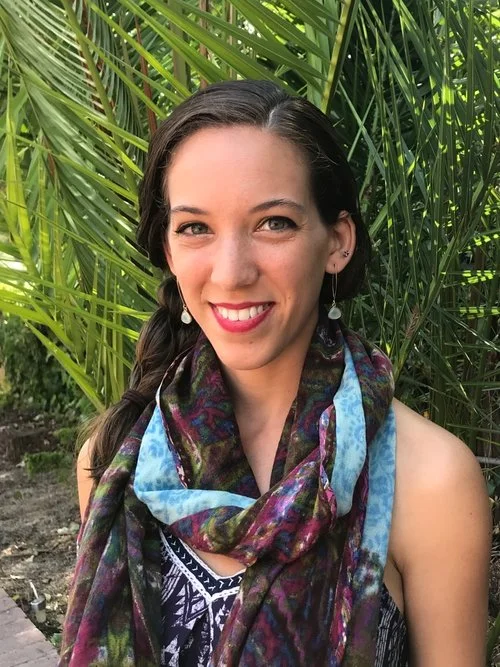Community Spotlight: Look! Pocket-Sized Butterfly Identification
Have you been to Byrne Preserve lately? If you have, you may have noticed the many butterflies at the preserve. John Metcalfe, a recent graduate of our California Naturalist program, has created a guide for identifying these important pollinators in a very localized and easy to use way.
Thinking about Planting?
Cheyenne is a recent Grassroots Ecology college intern who worked at our Redwood City and East Palo Alto habitat restoration sites. Read her top plants to remove from your yard, as well as her favorite California native plants to include.
Restoring our Wetlands for a Changing Climate
We need marshes now more than ever as we face a changing climate. Marshes provide a buffer between open water and the shore by dissipating wave energy, thus reducing flood risk. They sequester carbon, thus doing their part to reduce the greenhouse effect. And not least of all they provide shelter, forage, and nesting and breeding grounds for birds, mammals, fish and other aquatic life, including many rare and endangered species.
7 Things We Love about Foothills Nature Preserve
One of the bright spots of 2020 for us was the historic opening of Foothills Nature Preserve to the public (previously called Foothills Park). Since the 1,400 acre preserve’s initial opening in 1965, access was restricted to residents of Palo Alto—until now. As of December 17, this restriction was lifted and the preserve is now open for all to enjoy.
Since Grassroots Ecology has gotten to know the preserve over the past seven years through our habitat restoration efforts, we are excited to share with you our Top 7 List of what makes Foothills Nature Preserve so special— helping you all get ready to enjoy and be stewards of this amazing community space.
Diversity, Equity, and Inclusion - Why Now?
The racial justice movement––especially its newly annexed crowd of White folks––will have a lot to navigate in the coming months and years. What does it mean to be an ally? To recognize your privilege? What does it look like to take part in building a more just society?
Meeting Plants...and Remembering Them
By regularly walking around our restoration sites at McClellan Ranch Preserve and San Francisquito Creek, I noticed subtle changes of plants as they responded to the dynamic environment that might otherwise go unobserved.
Privets and other Pet Peeves
By Claire Elliott, Senior Ecologist
You may know that Grassroots Ecology’s team has worked for many years to restore habitat in our local parks and preserves. But, did you know we also have projects designed to support nature in our cities? Invasive ornamentals and edibles are a big problem. Three that I am on constant vigil for are Mexican feather grass, Algerian ivy and glossy privet.
How to Stay Rattlesnake Smart this Summer
By Nikki Hanson, Nursery Manager
Rattlesnakes are very mild-mannered snakes, who go out of their way not to waste a bite on protecting themselves. As long as you give them space and don’t bother them, they will not bother you. As you hike, follow these safety tips to prevent accidentally scaring a rattlesnake.
How to Collaborate with Your Landscape: Creating Fire-Resistant Habitat
Driving around the Santa Cruz Mountains lately, I have noticed a trend towards denuding the understory, thinning trees, limbing up remaining trees, and chipping everything that can fit through an industrial sized chipper. As a native plant and wildlife lover, it is hard to see such a change in the landscape. But, with a little information, there are some ways to create fire-smart landscapes that retain some of the natural understory, protect property from fire and invasive weeds, and provide for wildlife.
All Creatures, Especially Small
For many thousands of years before the familiar honeybee arrived, a different and varied set of bees has been hard at work in our local ecosystems. Now more than ever, our native pollinators need our help.
Celebrating Paul Heiple: A True “Weed Warrior”
Paul Heiple is a champion of restoring local ecosystems. For over 20 years, he’s been building a legacy of stewardship by educating others about the natural world. This month, we are celebrating his retirement from Grassroots Ecology.
The Thistle and the Ant
I knew I had to act fast to conserve our thistle population at Stulsaft park, so I proposed an ant survey to make sure the thistle’s seeds were being dispersed to ensure the plant’s longevity at the park.
The only problem was, I knew just two species of ants: the red ones and the black ones.
Diversity in STEM: Reflections as a Young Scientist
The science bug had bitten me. I knew this is what I wanted to do.
Mother Oak, Father Time
Perhaps the real world embodiment of The Giving Tree, the tall and benevolent oak not only provides a shaded reprieve for the tired hiker, but is also unparalleled in its ability to grant food, water, shelter, and protection for wildlife. But like many wild things, our mighty oaks are threatened by a rapidly changing world.
Connecting Creeks to Climate Change
“What’s that?” asked a curious fourth grade student. We were standing on the bridge over San Francisquito Creek near El Palo Alto Park, where a class from a nearby Palo Alto elementary school had gathered to learn about the history of the park and to plant native plants along the path.
Sense of Place
Growing up in Houston, the greatest connection I had to a relatively natural space was my backyard.
A Deep-rooted Friendship: Stanford and Grassroots Ecology
The benefits of neighboring one of the best universities in the world are plentiful. From our organization’s onset, we have enjoyed a strong and mutually-supportive relationship with Stanford University that has taken on many forms. Stanford groups volunteer to restore our local open spaces, including the annual Beyond the Farm event, and the Stanford Conservation Program collaborates on projects that help restore Matadero and San Francisquito Creeks. One of our favorite ways we’ve collaborated with our neighbor is through the Open Space Management Practicum, a class in the Earth Systems Department.
Redwood Grove Planting, Past and Present
Historically, Redwood Grove had no naturally occurring redwoods. The redwoods we see there today were planted almost a century ago by Emma Halsey with saplings she dug up from the Santa Cruz mountains. She planted them along Adobe Creek, in a place once dominated by willows and oaks. Now the redwoods tower more than 75 feet tall, and are the defining feature of this beloved six-acre city park.
Planting a Seed and Watching it Grow: the Impact of Environmental Education
Having a healthy respect for the limits of our environment can help instill a strong environmental ethic no matter what career one chooses to pursue. I believe that ultimately these kids’ actions early on in life will lead them to take more of a personal stake in the well-being of their communities, and spread hope for a better future to others.
Our Steward Natalie's Story
Before Grassroots Ecology, I was a newly educated AP Environmental Science student who wanted to help the earth, but one who didn’t know where to start. I found out about the organization through a Cupertino newsletter advertising about Grove Guardians, a summer stewardship program for teenagers. After my first summer morning at Redwood Grove, I knew this is what I was looking for: an interactive experience with nature that furthered my education.




















